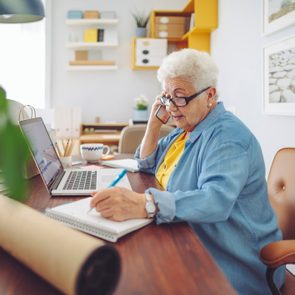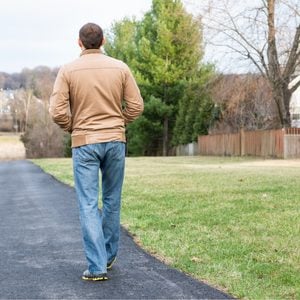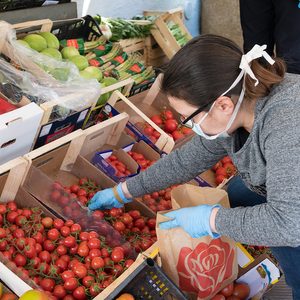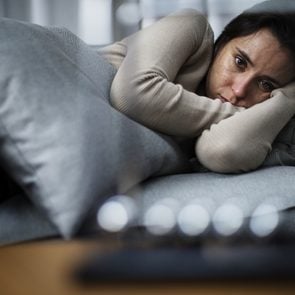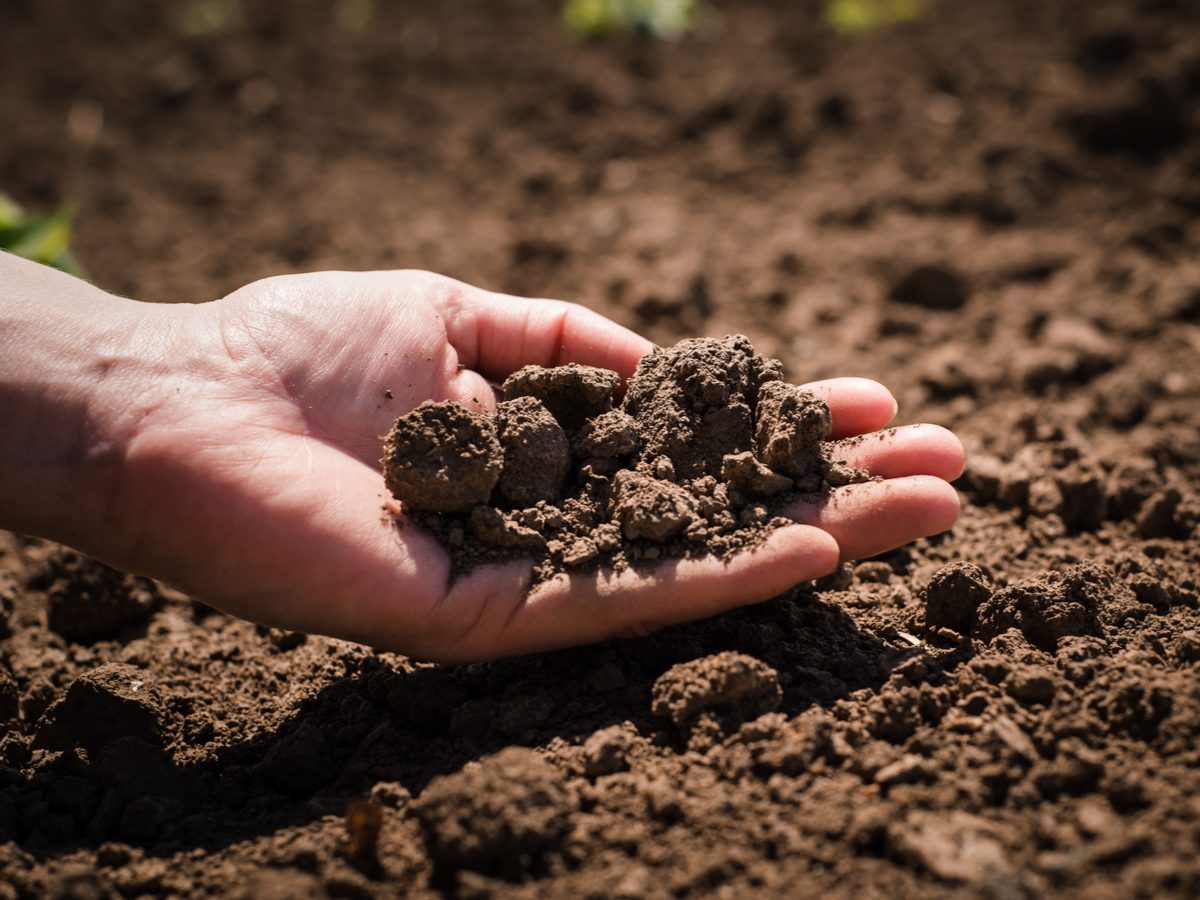
How to amend soil
A cooped-up winter fuels spring fever and that seasonal need to fill trunks and truck beds with seedlings, plants and dreams of a picture-perfect garden. But before you start digging in, pause and pay attention to your dirt.
“As much as we get excited about flowers and vegetables, you have to take a step back,” says Erin Schanen, a Master Gardener volunteer, creator of The Impatient Gardener and Troy-Bilt’s garden expert. “Soil is everything.”
Minerals, organic materials, air and water blend together to create soil. Having the right balance in texture and nutrients is essential for healthy plants and a bountiful garden. (Want to do your part to save the honeybees? Add these bee-friendly plants to your yard.)
Test your soil
The first step should be a soil test. They are easy to order online or find in a local hardware store.
Adjust the pH level
Testing can show whether your soil is out of balance with too much acid or alkaline. Adding limestone to raise pH or sulfur to lower it can bring soil to the neutral level most plants need to access essential nutrients. Some plants, such as blueberries, azaleas and rhododendrons, prefer a more acidic soil. (Not all bugs are pests! Here’s how to roll out the welcome mat for insects that are actually good for your garden.)
Improve soil texture
Soil requires a good balance of organic matter so it’s not too heavy or too light. If soil contains too much sand, it drains too quickly, preventing roots from capturing water and nutrients. Too much clay prevents proper drainage, and water buildup can drown the roots. Roots need air, and must be able to spread into the soil.
Schanen says “compost improves almost every soil” by helping sandy soil retain water and lightening clay soil to help it drain.
Till in chopped leaves
You can also till or hoe finely chopped leaves (captured in your lawn mower bag) into your garden to improve the soil’s texture. Don’t mix in other organics such as egg shells, fireplace ash, coffee grounds and vegetable and fruit peelings unless they’ve had time to compost.
Add fertilizer
If the soil test reveals low levels of key elements like potassium, phosphorus and nitrogen, commercial fertilizers such as Milorganite can enrich the soil. Depending on test results and recommendations, adding minerals like calcium and magnesium can help vegetables thrive.
Replenish soil annually
With an established garden, add an inch of compost each year. You also can add a layer of leaves to keep soil cooler, retain moisture and make it harder for uninvited seeds to take root. Think of this as the super shield against invading seeds from weeds or trees.
Next, check out these tips for growing a vegetable garden—anywhere!
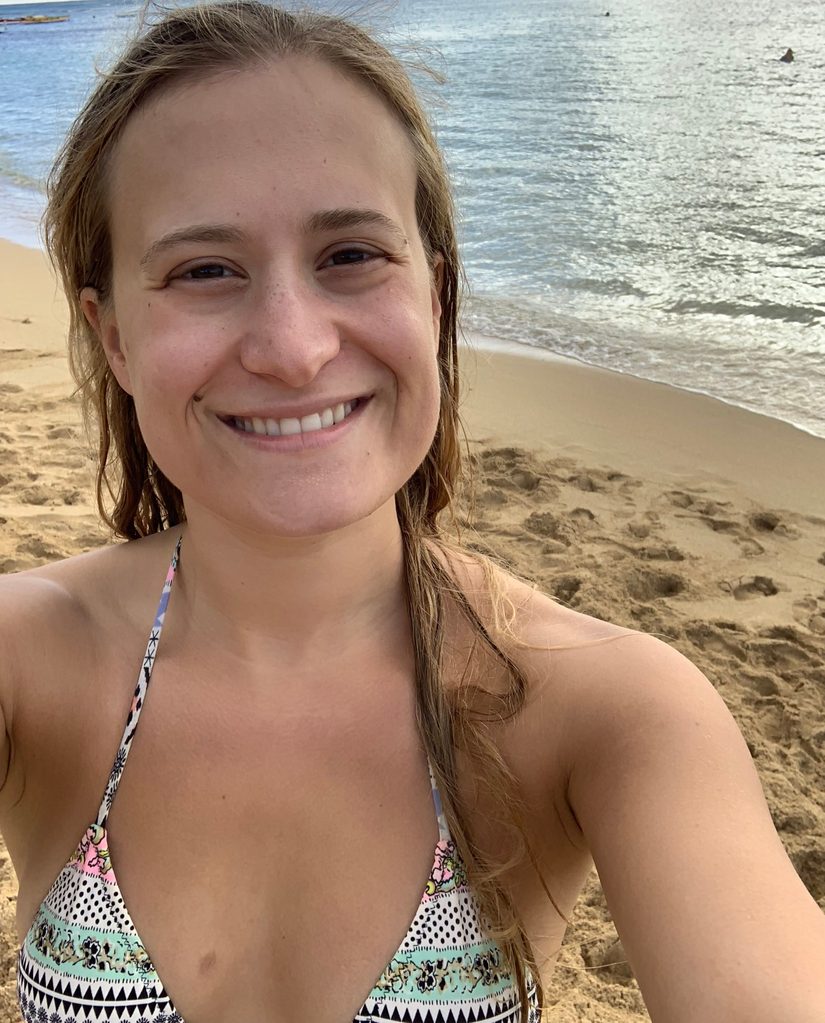
A couple of years ago, I had three moles removed. My trusted dermatologist told me they looked suspicious in my yearly skin exam, and so he wanted to remove and biopsy them. I’m three-quarters Italian and tan easily in the summer, but my grandpa did have melanoma (they caught it early, thankfully).
As a health writer, I know that having a family history increases your risk of melanoma. Furthermore, catching it early is key to prevent it from spreading, and it also increases your chances of successfully treating it, according to the Skin Cancer Foundation. So, if my doctor tells me something on my skin looks suspicious, I’d rather be safe than sorry.
I did have some concerns about scarring—two of the moles were on my ribcage right under my breasts, and the third was in my cleavage. My doctor reassured me that as long as I was diligent about wound care, it shouldn’t be so bad. At my next appointment, he shaved them off.
But, despite my tending to my wounds every single day without fail, the scars were pretty noticeable months after they healed. It looked like someone scooped out small chunks of my skin because, well, that’s essentially what had happened. The scars on my ribcage are noticeable in a bikini. The scar in my cleavage was really visible in my wedding dress. If I had expected that scar, I probably would have waited to have it removed until after my wedding. I know that some scarring is simply the cost of doing business. But, I really wish I had known more about what to expect when I said yes to having my moles removed. Now, a few years later, the scars have smoothed out a bit, but they’re still noticeable, discoloured indentations in my skin.
To figure out if my experience was normal, I asked a few dermatologists to explain the typical mole removal process and what people might want to know beforehand.
Two main options for mole removal
When dermatologists remove biopsy moles, they can do it one of two ways, says Amanda Wendel, MD, dermatologist at Northwestern Medicine in St. Charles, Illinois. One option is a shave excision, which is what I had. The doctor will use a razor-like tool to basically shave off the mole and some of the skin around it.
The other option is called a punch biopsy and is often used when the mole goes deeper into the skin, according to the National Cancer Institute. A circular tool with a blade is pressed into the skin around the mole to cut it out. Since the cut usually goes pretty deep, your doctor will then put in a few stitches.
Which mole removal method is best depends on factors like the shape of the mole, the size of the mole, and both your and your doctor’s preference, Dr. Wendel says.
Mole removal should be painless
A lot of people think that mole removal is going to be a painful procedure, says Susan Y. Chon, MD, dermatologist at The University of Texas’s MD Anderson Cancer Center in Houston. “The thought of having a biopsy is so stressful and the truth is, it’s quite painless,” she says. “It’s a very tolerable and non-invasive procedure. It’s done very quickly and very effectively.”
Your doctor will use a tiny needle to inject an anesthetic into the area, which numbs you instantly. “People are always shocked that it gets numb so fast,” says Dr. Chon. Personally, I don’t do well with needles, but I’d agree that the numbing part was quick and painless, and all I felt during the removal was some pressure.
Wound care for proper healing
“Either with or without stitches, we want the wound to stay moist and covered,” Dr. Wendel says. “Moisture helps it heal. We want new skin cells to migrate easily and quickly [to the site of the wound], and a moist environment can help with that.” Moisture helps prevent scabbing, which can essentially act as a barrier and makes it harder for new skin cells to migrate to the area and heal the wound. Covering the wound with a bandage will protect it from dirt and debris that can cause infection, Dr. Wendel says. That’s why my doctor had me apply an ointment and change the bandage a few times each day.
Dr. Chon also notes that it’s important to avoid submerging the area in water (swimming or taking a bath) until the wound is healed. On that note, it’s a good idea to time any mole removals for when you don’t have an upcoming vacation planned, she says. Travelling itself makes it harder to keep up with proper wound care, and spending time in the sun can further damage the area and hinder healing. My doctor specifically asked me if I had any beach vacations planned for the near future (I did). We waited a few weeks until I got back to take off my moles.
Your dermatologist will also ask you to limit your activity to prevent pulling and tension, especially if you’ve had stitches, Dr. Wendel says. “Depending on where the spot is, we don’t want any heavy physical activity for at least two weeks.” After my biopsies, I had to avoid movements that required me to lay down on my stomach or really twist or bend my torso, but was able to do pretty much everything else.
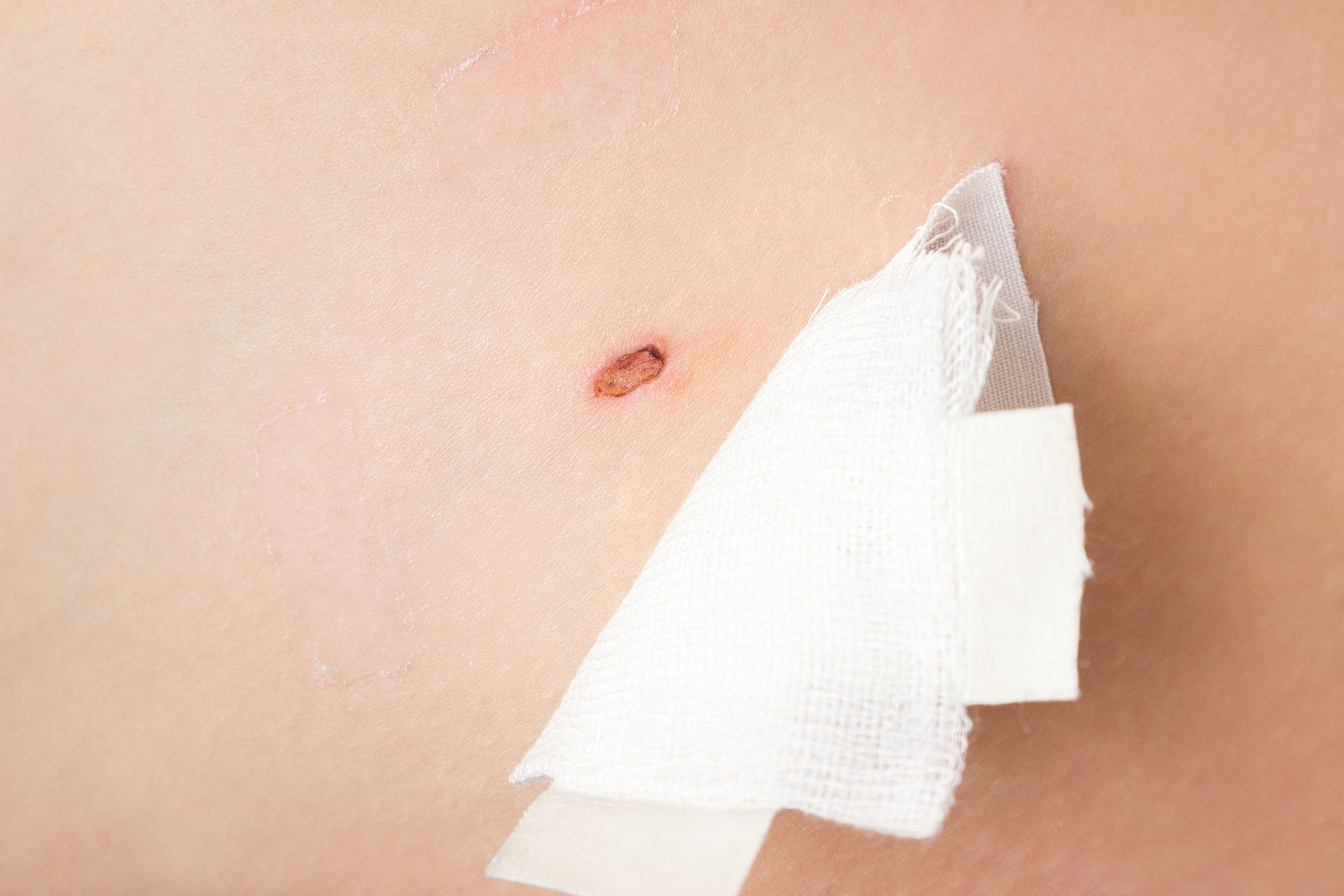
The ups and downs of the healing process
I’m a very compliant patient, so I was pretty annoyed that my wounds weren’t healing perfectly. Apparently, being young is a disadvantage when it comes to mole removal scars.
“It is true that people do heal differently and some of that has to do with the age of the patient,” Dr. Wendel says. Younger people actually tend to scar more, she says, because having tighter, more elastic skin makes scarring more noticeable. (Who knew?!)
Some areas of the body also tend to scar more than others—usually, anywhere the skin is tighter or where there’s a lot of movement and pulling on the wound. “The shoulders and upper back are probably the worst,” Dr. Wendel says. The abdomen can also be a bad area, she adds. Keloid scars—raised and bumpy—are more common on the chest and upper back, says Dr. Chon. In contrast to my slightly concave scars, keloid scars occur thanks to an overgrowth of collagen during the healing process.
Also, some people are just genetically prone to scarring more, Dr. Wendel says. Sometimes there isn’t much of an explanation beyond that.
How to minimize scarring
“It’s impossible to do scarless surgery, even for a plastic surgeon,” Dr. Wendel says. “But there are a few things you can do to help improve it.” That is, beyond taking good care of the wound and helping it heal as quickly as thoroughly as possible.
Dr. Chon says that the type of removal I had, a shave excision, can sometimes leave a permanent depression in the skin, especially if your doctor ends up having to shave a little deeper than they had anticipated to get all of the mole. Scarring can still happen with a punch excision, but it can be a little less noticeable. Stitching the two sides of the wound together makes the scar smaller and flatter.
Once the wound is much healed, gently massaging the area may help break up the scar tissue, says Dr. Wendel. She recommends using ointment, like Vaseline or Aquaphor, and gently rubbing twice a day for two to three minutes each time.
“Sometimes we also recommend using silicone-based products or cortisone-based products to help with scars,” Dr. Wendel adds. You can find these over-the-counter, but it’s best to ask your dermatologist about what they recommend for the specific type of scar you have.
Dr. Wendel also makes an important note: It can take a couple of years for a scar to fully mature. “Don’t pass final judgment on the appearance of a scar for two to three years,” she suggests. At that point, if you’re still not happy with how it looks, you can explore cosmetic treatments like lasers for redness and discolouration and certain injections that may help flatten the scar.
While I’m not thrilled about my scars at my 2+ year mark, I don’t regret having my moles removed. Now that I know what to expect, I’ll be more prepared for any biopsies I need in the future.
Next, check out the skin cancer myths you need to stop believing.

Experiencing a little cabin fever? It’s time to get creative with our online social gatherings and armchair travel! Fortunately, museums like the Louvre and the Smithsonian National Museum of Natural History have been offering virtual tours to take during your downtime. On that note, here are more notable landmarks you can get familiar with from the comfort of your sofa.
Pyramids of Giza
You can check that trip to Egypt off your bucket list—for the time-being, of course—with an online tour, which includes the Great Pyramid, the Pyramid of Khafre and the Great Sphinx.
Eiffel Tower
See one of the world’s most visited monuments on this interactive tour. It takes travellers up to the viewing platform, which is the next best thing to being there. But before you depart, read up on these fascinating facts about the Eiffel Tower!
Palace of Versailles
Take a tour fit for a king when you look around Louis XIV’s opulent French palace.
Machu Picchu
Drop by Machu Picchu on this virtual tour from Google Arts & Culture. You can see how the individual blocks of stone fit together! (Don’t miss these incredible facts about Machu Picchu.)
Colosseum
The was once the world’s largest amphitheatre—and it’s one of Italy’s most popular attractions. You can take a walk inside.
Angkor Wat
This Cambodian “city of temples” is the largest religious monument in the world, and the tour includes many of the most iconic temples.
Taj Mahal
No need to fly to India to see one of the world’s most beautiful buildings and its equally beautiful grounds. The interactive tour includes routes around the mausoleum, reflecting pool and paradise gardens. (Learn more about India’s royal palaces.)
Stonehenge
This English Heritage virtual tour includes a 360-degree interactive image from the centre of this UK prehistoric site. How did they build Stonehenge? Maybe you’ll find out.
Great Wall of China
Explore some of the most photographed sections of China’s most famous landmark without a passport or a visa.
Next, check out these other virtual day trips you can take online!
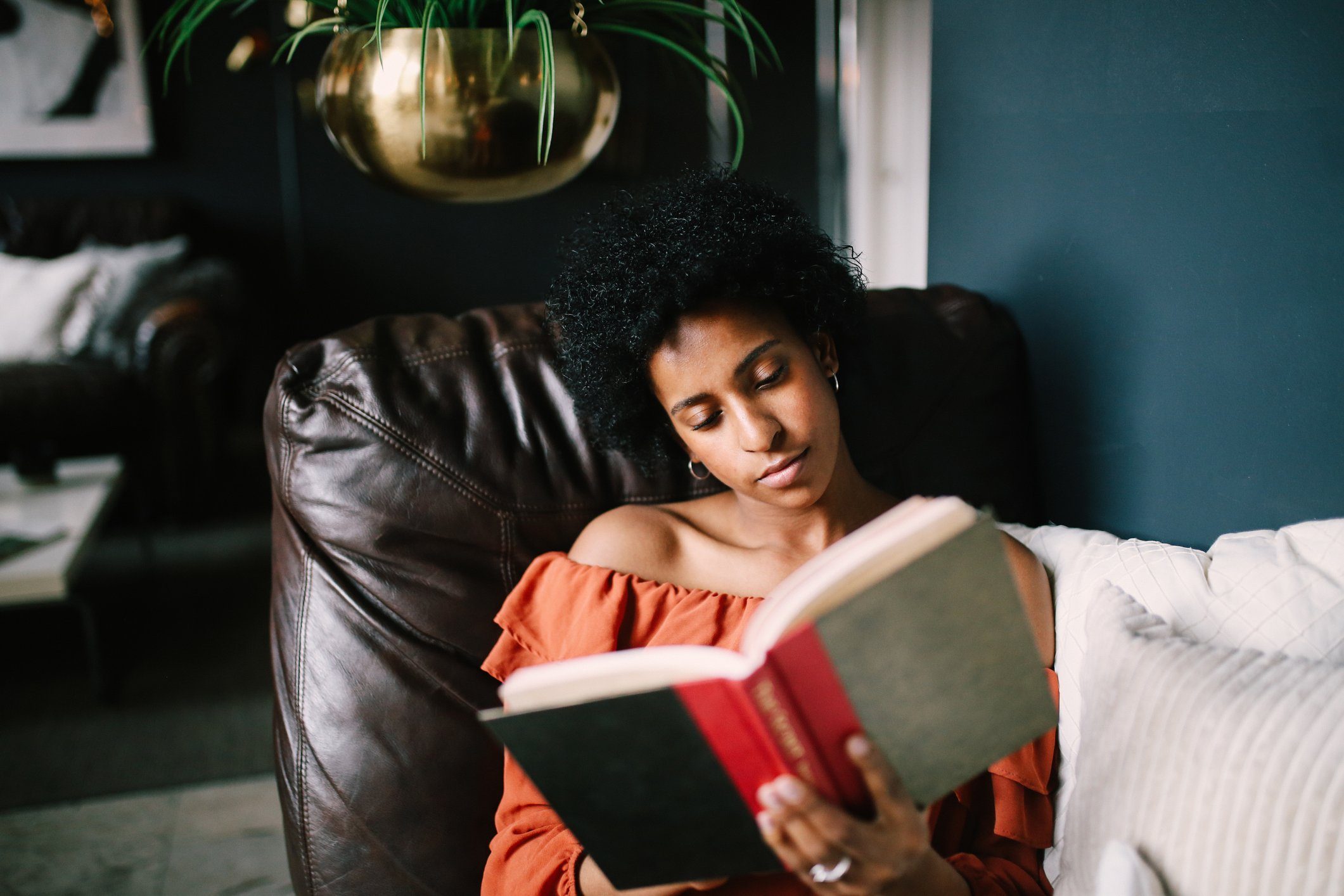
Taking a day off
Before the COVID-19 pandemic, you may have been tempted to use your vacation days to see friends and family, or book a one-of-a-kind adventure far away from home. Now, economies around the world are reeling and many people have been furloughed or laid off. But for the people who still have jobs and are working from home, should you feel any guilt toward taking a day (or two, or three…) of vacation?
Should you use all of your vacation days?
The short answer is yes, in fact, you should be taking vacation days, pandemic, or otherwise. By taking time away from work, you take much-needed recovery time for yourself. “Vacations can lead to a better mood, fewer physical health complaints, less exhaustion, and more focus,” Cathleen Swody, PhD, Director of Assessment & Founding Partner at Thrive Leadership tells Reader’s Digest. “Not taking vacation days has been associated with increased risk of mortality over time.”
A vacation at home
You might be wondering what the point in taking a vacation day is when you’re working at home because, well, you’re already at home. Instead of viewing a vacation as going somewhere externally, perhaps you could view it as going somewhere internally. “This requires viewing ‘vacation’ not as a big trip to another destination, but as dedicated time to reinvigorate,” says Swody. “The current work environment is stressful. The boundaries between work and non-work have blurred.
Lately, many employees have told me about how hard it is to disengage from work. People need more than a weekend to reenergize. Vacation will give employees the needed distance to gain perspective and objectively view work challenges.”
While the Canadian government has discussed easing lockdown restrictions, it doesn’t mean everyone is going back to work right away. “It has become clear that this is not a one month work from home hiatus. It could last months or longer. This means that we will all need time to refresh and regroup and in some ways, more now than ever before,” Samantha Ettus, founder and CEO of Park Place Payments, tells Reader’s Digest.
It is, however, important to be mindful of how and when you should use your vacation days. “There are two factors that stop me from telling you to take a week off right now,” Ettus adds. “The first is that the economy has taken a hit so it is likely that your company is trying to survive this downturn and you are part of them getting there. The second thing is that you don’t want to spend all of your vacation days now. Save the bulk of it for when you can travel again or even enjoy your local restaurants, museums, parks, and friends again.”
Using vacation days wisely
Now that everything from restaurants to theme parks to concerts has been cancelled, what do you do? “It’s a little hard to shake up your routine when you are bound to your home. You don’t want to use too much of your vacation now when your options are so limited,” says Ettus. “But to maximize your ‘vacation,’ allow yourself to do those things you don’t normally have time to do because work and cleaning and childcare get in your way. Plan out the days—a double feature or a great podcast or hours of uninterrupted reading time. Make sure you spend time doing the things that feel like little luxuries.”
How to maintain work-life balance
When you commuted to the office, you clocked in at 9 a.m. and then left at 5 p.m. When working from home, it might be harder to force yourself to stop working. “When working from home, there is a temptation to completely blur your work/life commitments and it is your job to create some separation. It comes down to routines and boundaries,” says Ettus.
“Wake up at roughly the same time each day and create a healthy morning routine for yourself. Start and end work at around the same time daily. Just because you are working from home doesn’t mean it is an invitation to binge-watch during the day or work on a presentation all night long. If family dinner is at 6:30 each night, stick to it, and to ensure that you are present each day with the people you live with, set aside 90 screen-free minutes each night.”
Finding joy in working from home
“First, the keyword here is activity. What hobbies or projects can you actively engage in that will make you happy? In which activities do you become so engrossed that you lose track of time?” asks Swody. “These types of activities will improve well-being much more than passively laying around. The act of choosing how time is spent is also psychologically beneficial, especially when so much feels beyond our control.” (Get inspired by these self-quarantine activities.)
Beyond looking into new activities, Swody recommends physical exercise as “exercise distracts our minds from work, improves how we view ourselves, and even can influence neurotransmitters with antidepressant qualities,” she says. She adds that exercise is critical to physical health. Swody also recommends connecting in a social way to friends and loved ones, like writing a handwritten note, having a video call, or even checking on someone who can be lonely.
Being able to breathe in fresh air is something that shouldn’t be taken for granted, either. “Try to get outside (safely) as much as possible, even if it is sitting your balcony or porch or a quick stroll,” says Swody. “Time in nature is associated with lower stress, improved attention, and better emotional well-being.”
What not to do when taking a vacation day at home
It might go without saying, but Swody recommends that “as tempting as it is, try to avoid working during vacation.” While the lines between work and home have blurred, that doesn’t mean your vacation day and your workday need to crossover as well. “Engaging in work activities will fire up psychological and physiological systems that are activated at work, minimizing the benefits of time away from the ‘office,'” she says. Transitioning from commuting to the office to commuting from your bed to your home office can be hard.
Next, find out how to self-isolate if you live with your family.
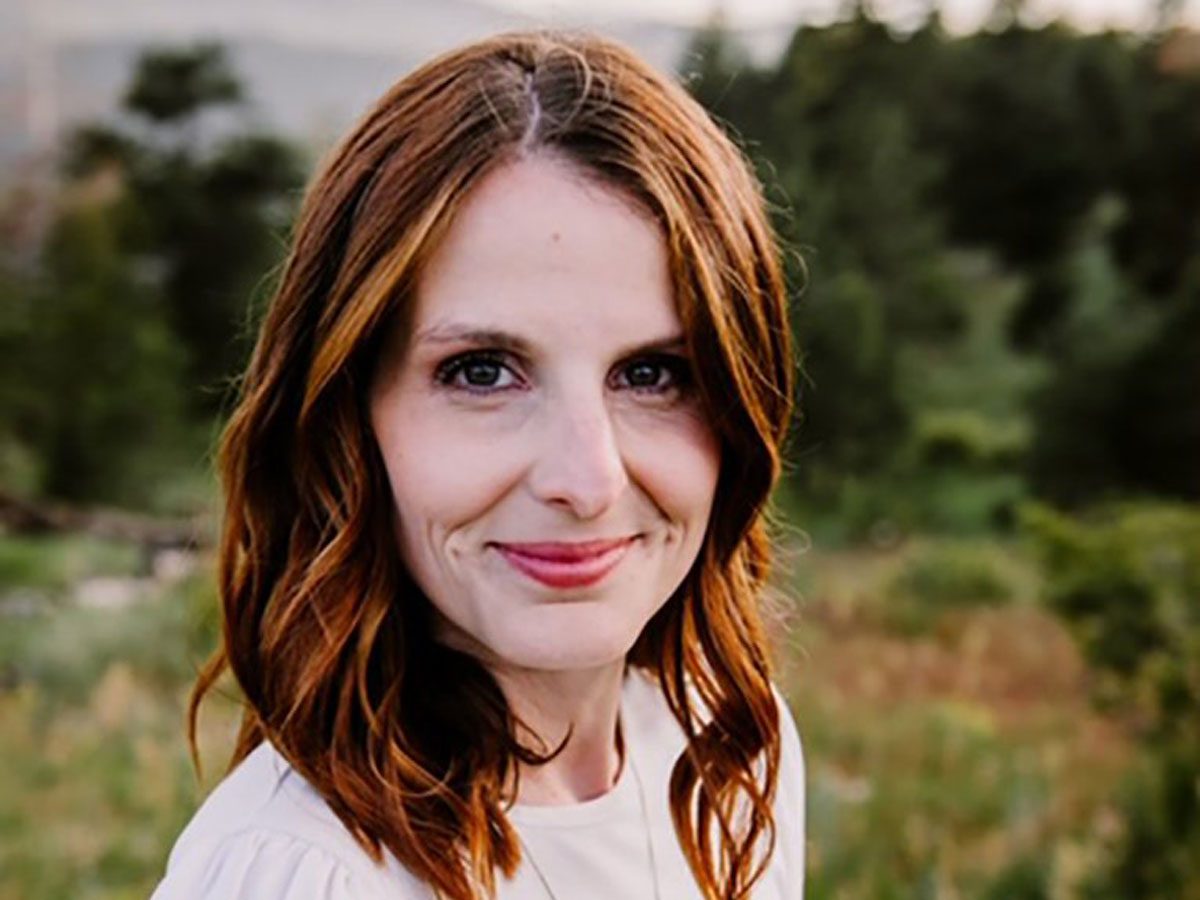
I’m a registered nurse and a nursing director for a global healthcare company. At the moment my job is to oversee training for nurses that are coming into a hard-hit area to help alleviate staff shortages due to the pandemic and need to be trained quickly in COVID-19 care. This means that right from the beginning, I have been able to see a broad overview of the illness, how it’s progressing, and the treatments being used for it.
This doesn’t mean I’m just sitting in my home office running training modules, however. I have to travel all over and help train nurses where they are. A month ago, I had the opportunity to work in New Orleans as a floor nurse which really put this disease into perspective for me. I saw more people die in my first two days than I had in my prior 10 years of nursing altogether. It was a huge shock and since then I’ve witnessed some really desperate situations working in intensive care units (ICU) that I’m still trying to emotionally work through.
If you haven’t seen it up close, it’s hard to understand how truly devastating and horrific COVID-19 can be and how quickly it can overwhelm medical facilities. This virus likely isn’t going anywhere until we have a vaccine and/or herd immunity. That’s why it’s so important to practice prevention and mitigation tactics—not just now, but even after the lockdowns end.
Quarantine has to end eventually
I live in Jefferson County, Colorado, and we are under shelter-in-place orders through May 8, after which there will be a partial reopening of businesses. Now that our lockdown is ending I’ve had to come up with a plan to go back to “normal,” while still helping to flatten the curve.
Even though I’ve been incredibly close to the detrimental effects of COVID-19, and I agree that some pretty drastic measures needed to happen in order to curb the spread, I still feel conflicted about the real and detrimental effects of lockdown. For instance, many people, including my nine-year-old son, have suffered greatly from not being able to get routine medical care. Yet while I’m glad that things are going to be opening back up, I realize that I’m very privileged to be able to have my life mostly go back to the way it was before. My loved ones are healthy, and my husband and I both still have jobs. We will absolutely do our best to abide by any government guidance or laws to keep others safe, hoping those laws are coming from a place of collaboration and inclusivity.
What I won’t do even after lockdown ends
I try not to ever live my life from a place of fear. That said, there are a few quarantine rules I’ll still be following after the lockdown ends—probably not forever but at least as long as I’m still working with COVID-19 patients.
I won’t go out in public without a mask
Even before face masks for everyone became commonplace, I knew my risk to transmit this illness to others was high due to my frequent exposure to COVID-positive patients. Realistically, I’ll be treating COVID-19 patients for the rest of this year, if not the next couple of years. So to reduce my chances of unintentionally spreading the virus, I’ll wear my surgical mask any time I’m out in public and will continue to do so until I’m no longer exposed to it at work. (Make sure you’re not making any of these common mask mistakes.)
I won’t run non-essential errands
My husband, Gage, has been doing the grocery shopping and other errands and he will likely continue to do so for some time, again, to minimize my risk of spreading the virus. I’m not complaining—fewer errands mean more time with my kids! We have two boys and we are foster parents so our house is always full of chaos and fun.
I won’t share drinks with my kids
I’ve never worried about sharing food or drinks with my kids in the past but I started avoiding it during quarantine just to be extra safe. As long as I’m still being exposed to the virus, I’ll continue to not share utensils, cups, or drinks.
I will never look at a doorknob the same way
I’ve become a lot more thoughtful of the places germs live and now routinely disinfect doorknobs, the fridge, light switches, and any high-touch areas. A fear of germs doesn’t stop me from doing things but it has definitely changed my cleaning habits. I don’t know if I’ll ever be able to look at a restaurant table again without wondering if it’s been disinfected.
I won’t leave home without disinfectant wipes and hand sanitizer
We now keep our car stocked with items we can use to quickly sanitize our hands and other items. I’m not going to be wiping down the swings at the park or anything but it’s nice to have them available for on-the-go cleaning. These types of small changes are low cost and are easy to do but still provide big benefits.
I won’t skimp on sleep
With the emotional and physical toll of working in the hospitals on top of my regular director role, I’ve had to be more intentional about taking care of myself. If I’m sick, that’s one less nurse out there who can be helping. One way I’m really trying to improve is getting enough sleep every night as it helps reduce stress and strengthen my immune system.
I won’t give up our new bedtime routine
One of the biggest benefits of quarantine has been some really tender moments with my kids. For instance, I just finished reading the Harry Potter series to my tween, who will shortly find snuggling with his mom and a book at bedtime less exciting once life goes back to “normal.” This has been so good for both of us, I’m not giving that up.
I will never take my community for granted again
Before COVID-19, I felt that people were generally friendly, but the way the community has shown up for me and other health care workers has fundamentally changed me for the better. Sometimes life gets so busy and I’m so self-involved I forget the power of a village. The “thank you” cards in my mailbox, the masks my neighbours made for my family, the meals brought over on nights we were taking foster kids—I could go on and on. Now that I have all these people who love me, I don’t want to let go of it.
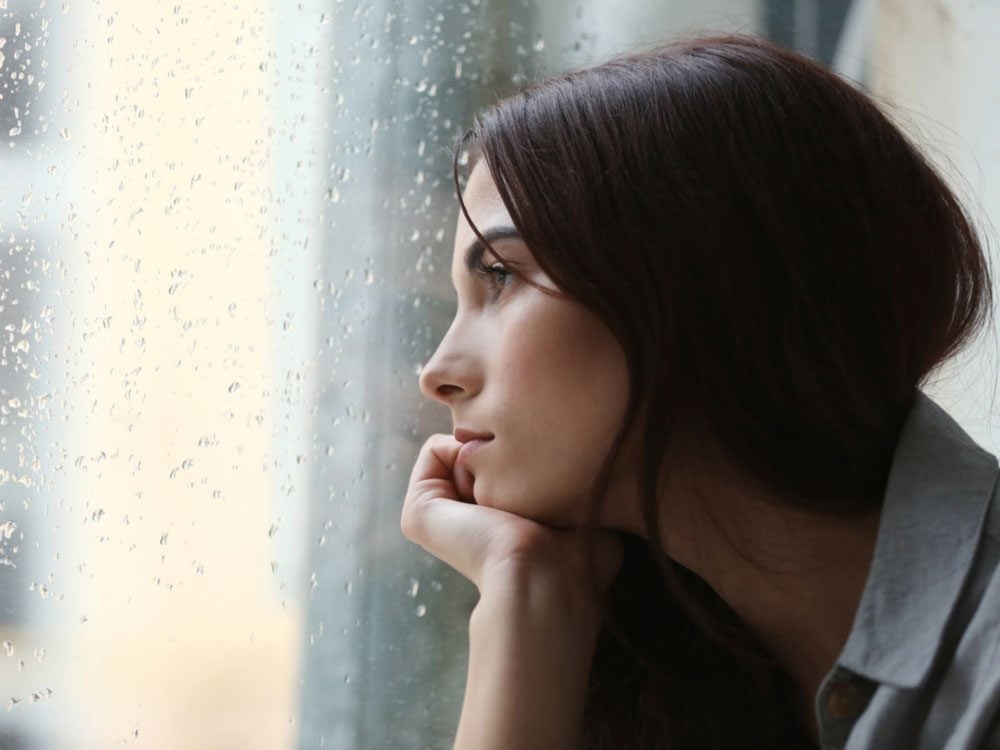
These Powerful Depression Quotes Might Change Your Life
“Whenever someone tells me to ‘Just be happy,’ I want to yell, ‘Oh, hey, depression’s gone! Why didn’t I think of that?’ But usually I just roll my eyes instead.” —Anonymous
“It’s so difficult to describe depression to someone who’s never been there, because it’s not sadness. I know sadness. Sadness is to cry and to feel. But it’s that cold absence of feeling—that really hollowed-out feeling.” —J.K. Rowling, author
“What they don’t tell you about depression is that sometimes it feels a lot less like sadness and a lot more like the emotional equivalent of watching paint dry.” —Alexis, Tumblr
“I was so scared to give up depression, fearing that somehow the worst part of me was actually all of me.” —Elizabeth Wurtzel, author
“The only thing more exhausting than being depressed is pretending that you’re not.” —Anonymous
“Sometimes I just think depression’s one way of coping with the world. Like, some people get drunk, some people do drugs, some people get depressed. Because there’s so much stuff out there that you have to do something to deal with it.” —Ned Vizzini, author
“The broken will always be able to love harder than most because once you’ve been in the dark, you learn to appreciate everything that shines.” —Anonymous
“In addition to my other numerous acquaintances, I have one more intimate confidant… My depression is the most faithful mistress I have known—no wonder, then, that I return the love.” —Søren Kierkegaard, philosopher
“Before you diagnose yourself with depression or low self-esteem, first make sure that you are not, in fact, just surrounded by a**holes.” —@Debihope (Learn how to spot the signs of high-functioning depression.)
“Our Generation has had no Great war, no Great Depression. Our war is spiritual. Our depression is our lives.” —Chuck Palahniuk, writer
“That’s the thing about depression: A human being can survive almost anything, as long as she sees the end in sight. But depression is so insidious, and it compounds daily, that it’s impossible to ever see the end. The fog is like a cage without a key.” —Elizabeth Wurtzel, author
“My mental health problems are real and they are valid. I will not judge myself for the bad days when I can barely get out of bed. I will not make myself feel worse because someone else appears to be handling their mental illness better than I am handling mine. Recovery is not a competition.” —Matt Joseph Diaz
“I am in that temper that if I were under water I would scarcely kick to come to the top.” —John Keats, poet
“To those struggling with anxiety, OCD, depression: I know it’s mad annoying when people tell you to exercise, and it took me about 16 medicated years to listen. I’m glad I did. It ain’t about the ass, it’s about the brain.” —Lena Dunham, American actress (Find out what OCD is really like.)
“If you know someone who’s depressed, please resolve never to ask them why. Depression isn’t a straightforward response to a bad situation; depression just is, like the weather.” —Stephen Fry, author
“This is my depressed stance. When you’re depressed, it makes a lot of difference how you stand. The worst thing you can do is straighten up and hold your head high because then you’ll start to feel better. If you’re going to get any joy out of being depressed, you’ve got to stand like this.” —Charles M. Schulz, cartoonist
“It is very hard to explain to people who have never known serious depression or anxiety the sheer continuous intensity of it. There is no off switch.” —Matt Haig, journalist
“Being sad and being depressed are two different things. Also, people going through depression don’t look so, while someone sad will look sad. The most common reaction is, ‘How can you be depressed? You have everything going for you. You are the supposed number one heroine and have a plush home, car, movies… What else do you want?'” —Deepika Padukone, Indian actress
“Getting better from depression demands a lifelong commitment. I’ve made that commitment for my life’s sake and for the sake of those who love me.” —Susan Polis Schutz, poet
“Depression is like a war—you either win or die trying.” —Anonymous
“Because that’s the thing about depression. When I feel it deeply, I don’t want to let it go. It becomes a comfort. I want to cloak myself under its heavy weight and breathe it into my lungs. I want to nurture it, grow it, cultivate it. It’s mine. I want to check out with it, drift asleep wrapped in its arms and not wake up for a long, long time.” —Stephanie Perkins, author
“Mental pain is less dramatic than physical pain, but it is more common and also more hard to bear. The frequent attempt to conceal mental pain increases the burden: It is easier to say ‘My tooth is aching’ than to say ‘My heart is broken.’ —C.S. Lewis, author
“Whether an illness affects your heart, your arm, or your brain, it’s still an illness, and there shouldn’t be any distinction. We would never tell someone with a broken leg that they should stop wallowing and get it together. We don’t consider taking medication for an ear infection something to be ashamed of. We shouldn’t treat mental health conditions any differently. Instead, we should make it clear that getting help isn’t a sign of weakness—it’s a sign of strength—and we should ensure that people can get the treatment they need.” —Michelle Obama, former first lady
“If you are depressed, you are living in the past. If you are anxious, you are living in the future. If you are at peace you are living in the present.” —Lao Tzu, philosopher
“The sun stopped shining for me is all. The whole story is: I am sad. I am sad all the time and the sadness is so heavy that I can’t get away from it. Not ever.” —Nina LaCour, author
“The pupil dilates in darkness and in the end finds light, just as the soul dilates in misfortune and in the end finds God.” —Victor Hugo, author
Next, check out these uplifting hope quotes.



